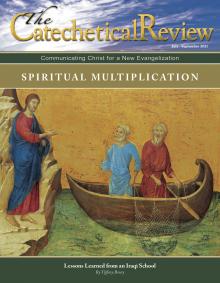I walked along the forbidden streets of one of Philadelphia’s most crime-ridden neighborhoods while being greeted respectfully by neighbors. They knew I lived at the church and, despite countless warnings about the safety of this community, I encountered only joyful faces. One of the first conversations I had as I walked from the El station to the church rectory, where I lived with other young adults, was with a seven-year-old girl, who asked me: “Is God a father and Mary a mother?”
Yes, Mary is a mother, and she is the mother of all of us; she is Comforter of the Afflicted and Refuge for Sinners. She is Mother of Divine Grace and Mother Most Pure. Her mission as Mother continues in the world today, through the Church.[1] This is why we turn to the Church in time of need—we bring our spiritual, material, social, and emotional needs to the Church.
“The church has always been here,” another man explained to me, “but the doors were always locked. No one was there.” It was as if our neighbors intrinsically knew that this grandiose, beautiful building that stretched up to the heavens was meant to be their saving grace; that they should be able to look to the church in time of need and find comfort (Is 66:13); that they should be able to knock and have the door open unto them (Mt 7:7).
The rest of this online article is available for current Guild members.
This article is from The Catechetical Review (Online Edition ISSN 2379-6324) and may be copied for catechetical purposes only. It may not be reprinted in another published work without the permission of The Catechetical Review by contacting [email protected]

















